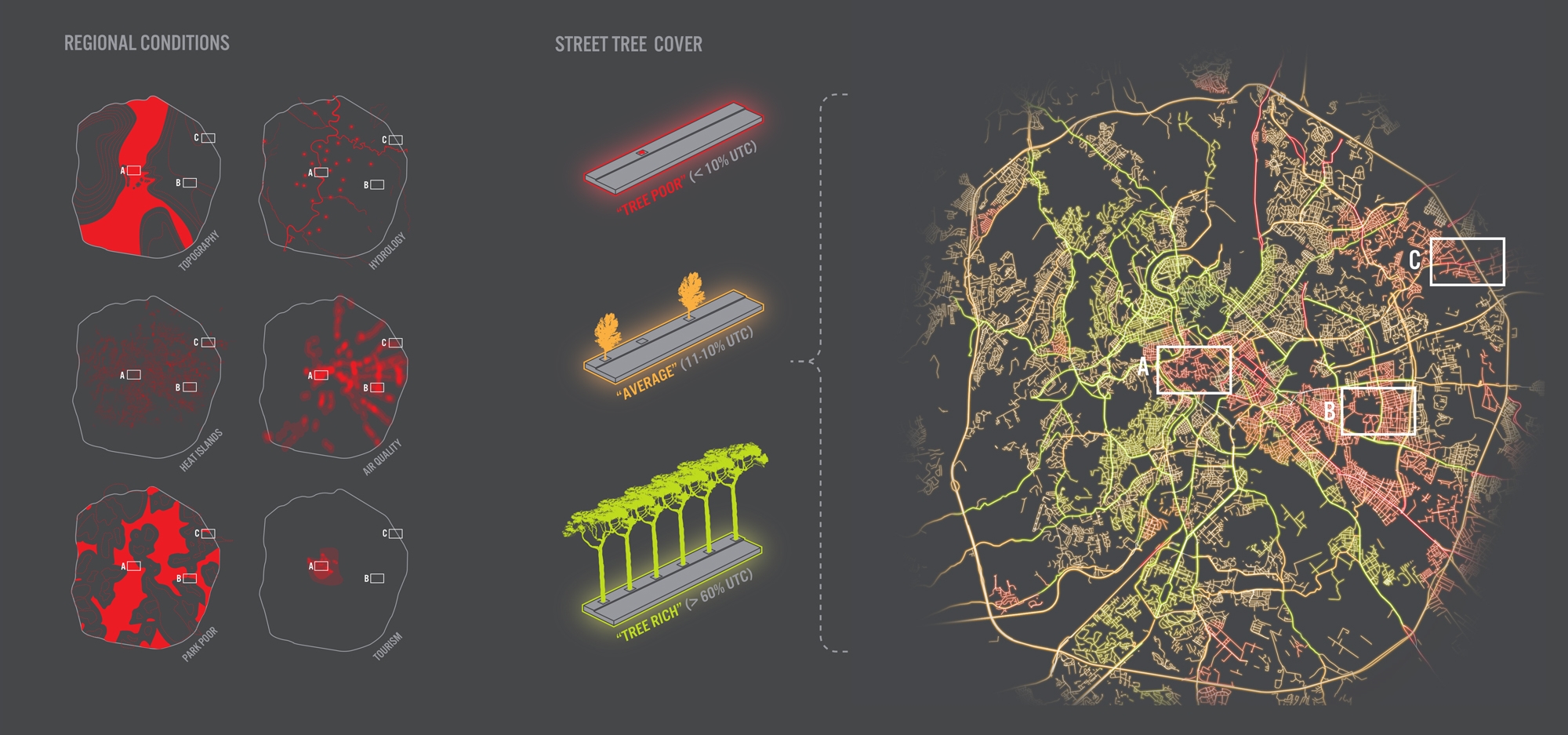
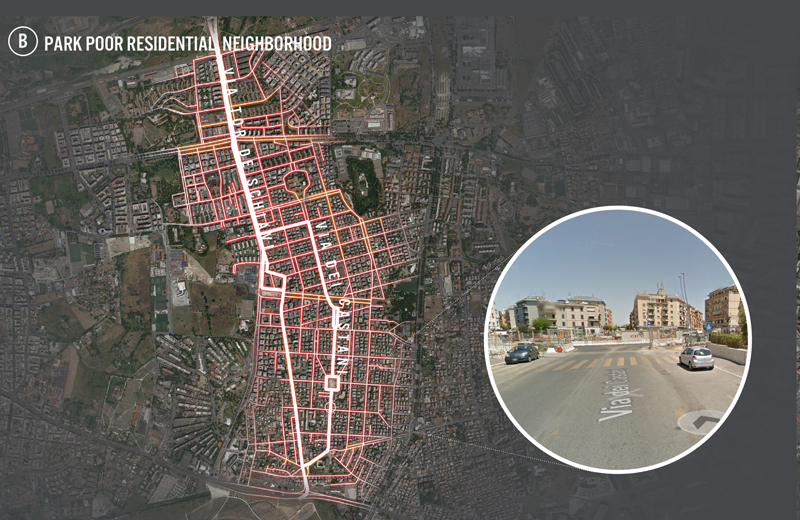
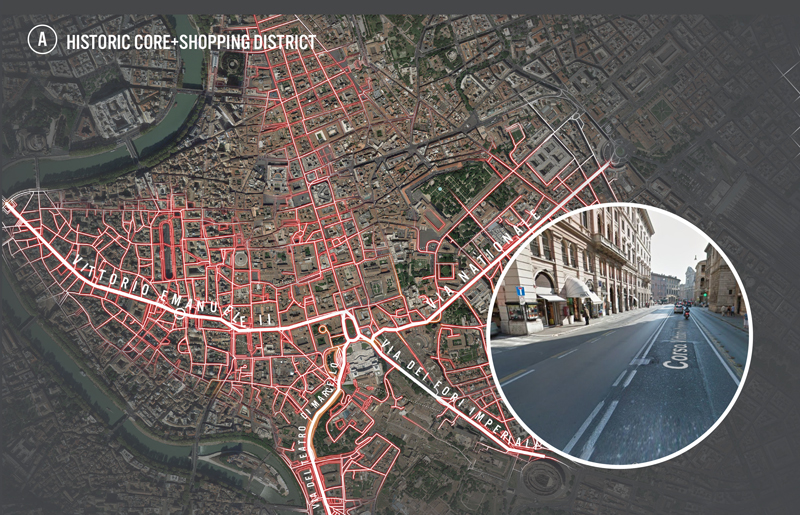

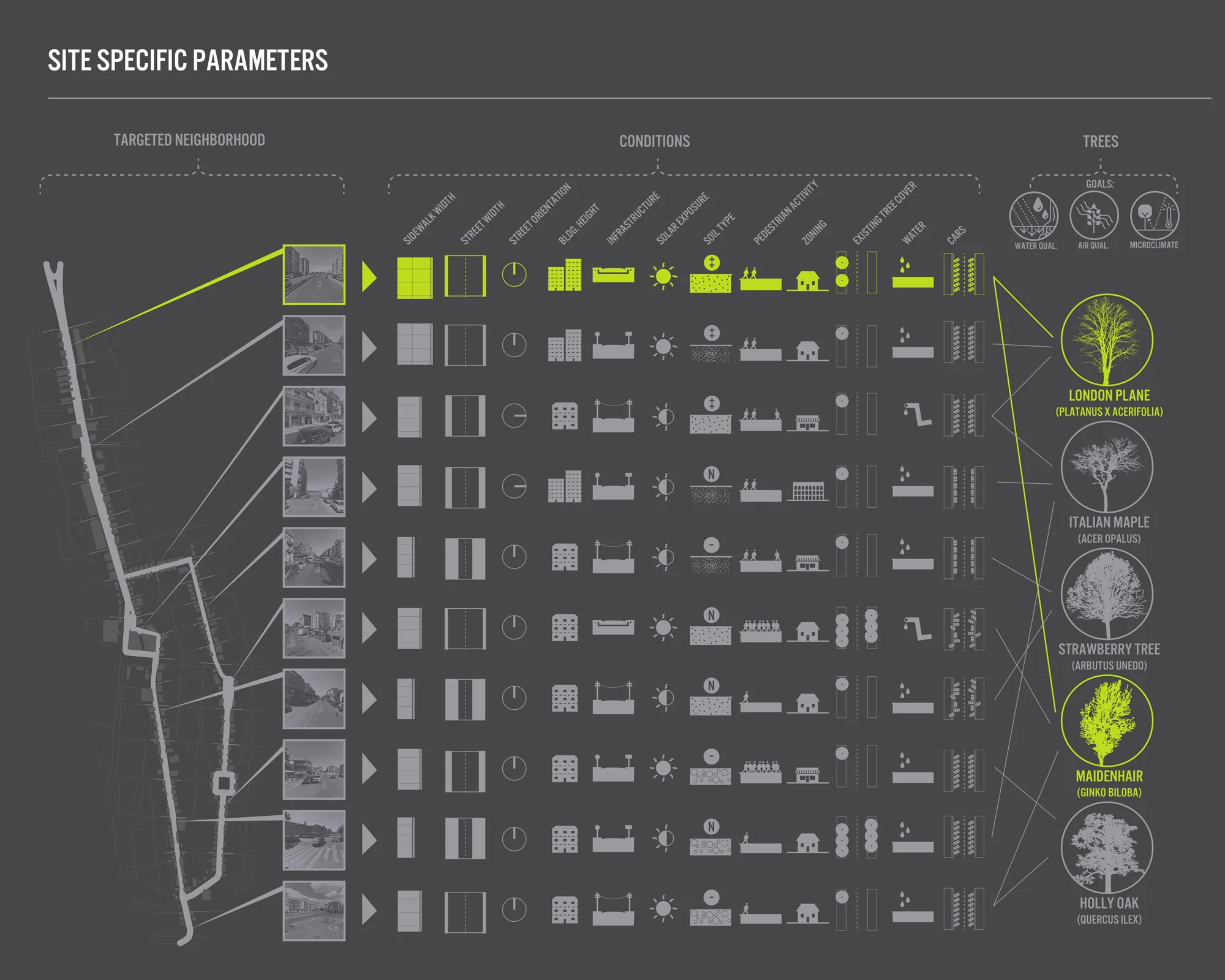
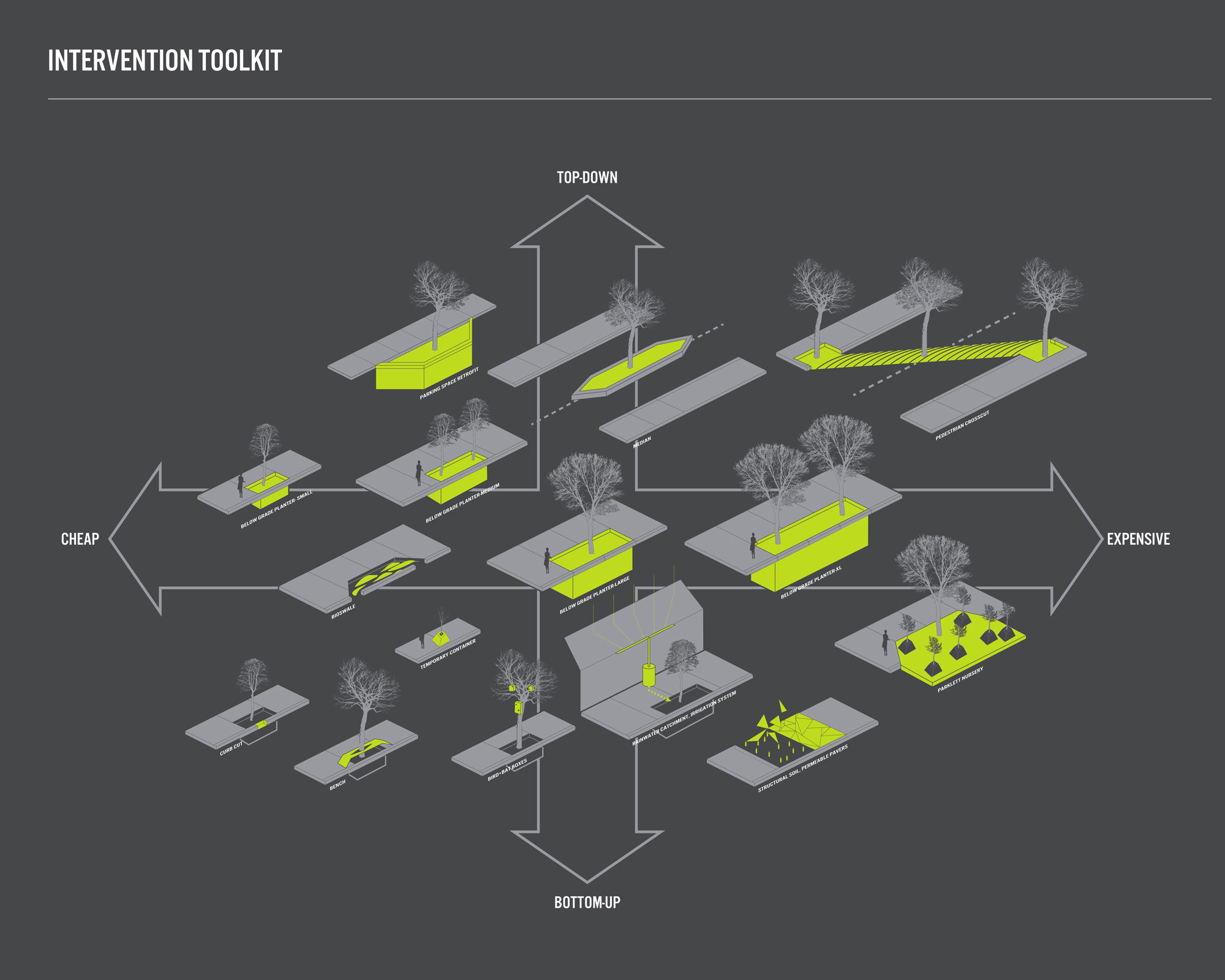
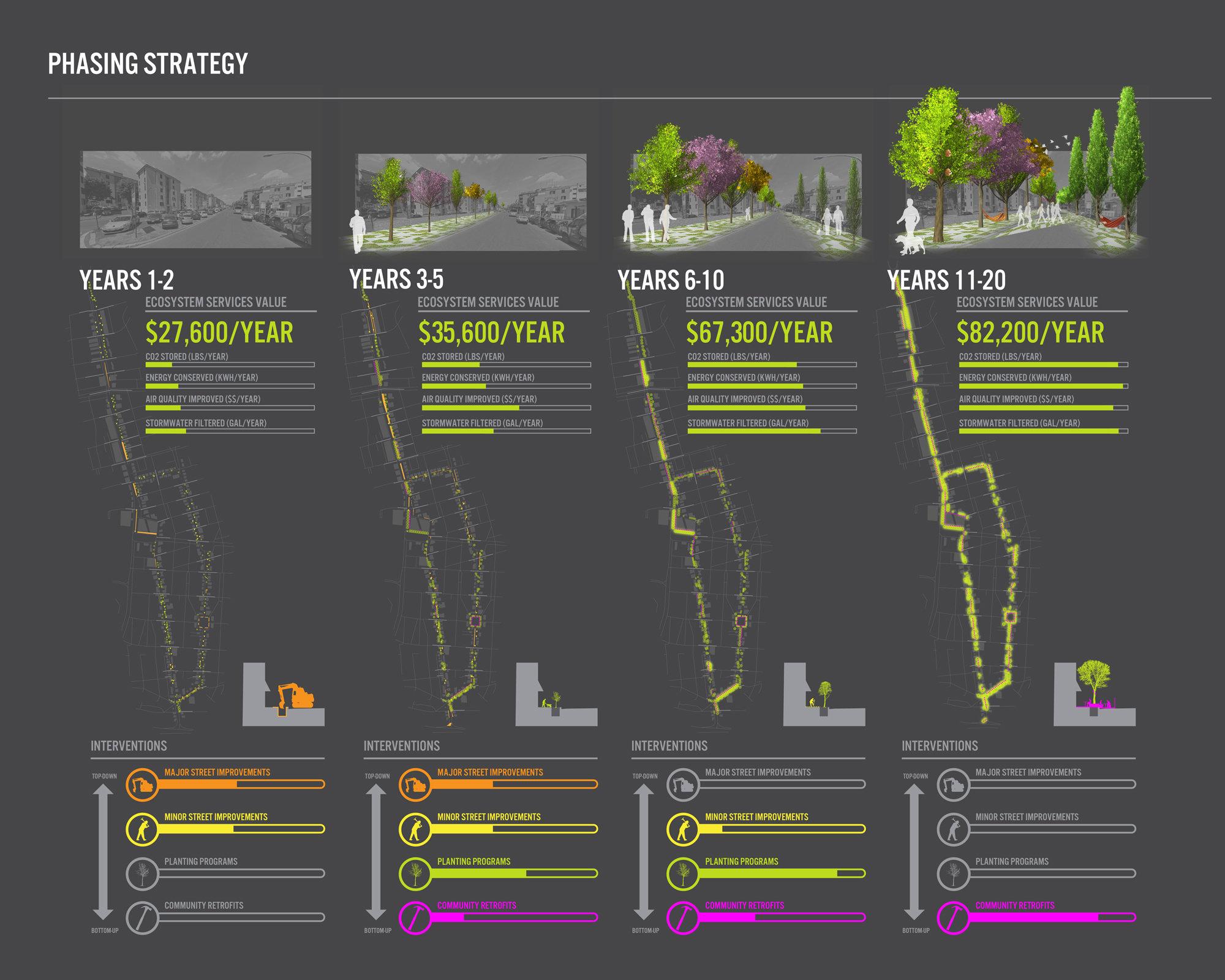
Urban trees are best understood as biogenic public utilities, providing many layers of ecological, aesthetic, and economic value to a city. STRUT Imagines a flexible methodology for deploying trees as both a holistic and localized response to urban ecological challenges.
What we Asked:
What is the relationship between urban trees and urban health and quality of life? What are the obstacles and challenges to effective urban forest planning and management?
What we Discovered:
Planting more trees is perhaps the least controversial and most comprehensible of urban intervention strategies in existence today. But although many cities are currently attempting to implement tree planting programs, they often suffer from a lack of strategy, funding and accountability.
What we Did:
STRUT is a methodology for identifying and prioritizing areas within an urban ecosystem where tree-planting interventions can have the greatest positive impact for the least amount of investment. It takes into account such factors as urban heat islands, particulate air pollution concentrations, watershed health, and socio-economic factors. It also offers strategies for providing critical entry points into the process for as many types of local stakeholders as possible. We believe this is the only way to increase buy-in, accountability, scalability, and efficiency. The ultimate goal is an incremental urban forest and management plan that is built from both the top down and bottom-up, impacting not only to the localized context of the neighborhood in question, but the overall health and resilience of the city in question.
What Else:
The city of Rome was used as a case study for STRUT where we completed an initial research/assessment phase in collaboration with the Servezio Giardini Municipal Authority. The project is still in the early phases of development, and we are actively seeking cities in which to refine and test the methodology further.
Special thanks to Simonetta De Ambris at Comune Roma for her assistance with data collection and access.

